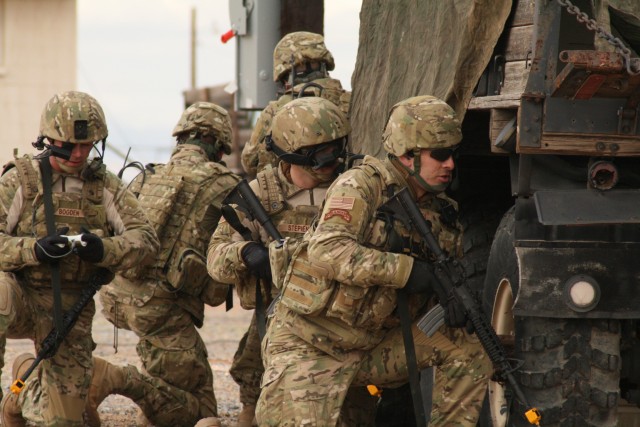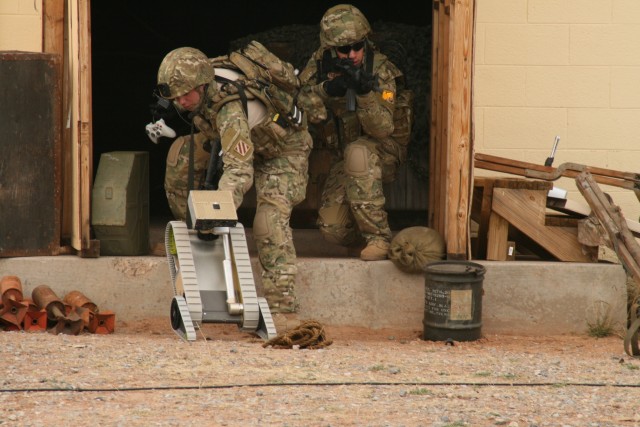WASHINGTON (Army News Service, Feb. 2, 2007) - The Army completed the first live-fire exercise, Experiment 1.1, involving Future Combat Systems technologies and equipment at the Oro Grande Range at Fort Bliss, Texas, yesterday.
The exercise is the first step in accelerating the delivery of key FCS capabilities to current-force Soldiers, and part of the most comprehensive Army modernization effort in more than half a century.
A platoon of 36 Soldiers tested such FCS technology as Urban and Tactical Unattended Ground Sensors and unmanned vehicles designed to clear roads and buildings, as well as detect persons and objects that may enter a building occupied by Soldiers. Robotics and unmanned vehicles help clear buildings without sending actual Soldiers inside.
"With the Future Force Warrior Individual Ground System, every Soldier knows where their fellow Soldier is, even if they're not next to them," said Sgt. 1st Class Richard Haddad, Future Combat Systems, Evaluation Brigade Combat Team. Another advantage of the FFWIGS is the ability of the platoon leader and the platoon sergeant to locate all their Soldiers on their screen and communicate with them by radio.
"Soldiers won't have to wait for someone to send them the information. Every Soldier will have the ability to listen to real-time information on the radio so he can anticipate the next move. He stays informed, that means he stays alert." Haddad said.
The unattended ground sensors are part of the first FCS spin-out to begin in 2008. Spin-Out 1 also includes an early version of the FCS Network and the Non-Line-of-Sight Launch System, also tested yesterday. The NLOS-LS gives the Army a highly deployable, long-range precision attack capability with a much-reduced logistical footprint for faster and more sustainable deployments.
"The new technology we have is going to save a lot of lives," said Sgt. 1st Class Andres Rugerio, FCS, EBCT. "That's the thing we're impressed about."
Experiment 1.1 had three phases. Phase 1 involved hardware and software integration and networking and systems interoperability testing in a laboratory environment at Huntington Beach, Calif. Phase 2 involved interoperability testing of various FCS systems in a more realistic, joint operational environment with more than a dozen Soldiers at Fort Bliss.
"The future is now," FCS Program Manager Maj. Gen. Charles Cartwright said yesterday. "Networked Soldiers already are using early FCS systems; and we're getting invaluable Soldier feedback about what works and what needs improving. Today's exercise is further confirmation that the FCS program is working as planned."
Yesterday's live-fire exercise will help ensure that the new technologies tested are sufficiently mature and suitable for the current operational environment. Results of the exercise and the Soldiers' feedback will inform subsequent program development, according to Cartwright.
The FCS program has delivered more than five million lines of software code and several pre-production prototype systems on cost and on schedule.
(Maj. Deanna Bague from the Fort Bliss Public Affairs Office contributed to this story.)




Social Sharing